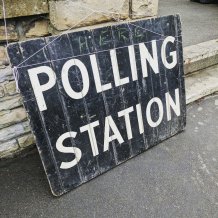articles

The study shows appointing a new leader just before an election leads to a higher turnover of MPs after the poll
A change at the top before elections boosts MP turnover across Europe, research shows
Appointing a new leader just before an election leads to a higher turnover of MPs after the poll, a study of political parties across Europe during the past 80 years shows.
A change at the top is a key determinant of how many politicians will step down and be re-elected, experts who have analysed hundreds of electoral contests since 1945 have found.
The proportion of new and re-elected MPs is almost 5 percentage points higher on average for parties which changed their leadership before an election compared to those that did not do so.
Athanassios Gouglas and Gabriel Katz from the University of Exeter, and Bart Maddens and Marleen Brans from KU Leuven Belgium, analysed statistics from 251 parties in Europe between 1945 and 2015. They looked at the impact of changes in parties’ leadership and name, the formation of electoral cartels, mergers and divisions on the turnover rates of politicians in Austria, Belgium, France, Italy, the Netherlands, Sweden, Switzerland and the UK.
Dr Gouglas said: “Our analysis provides support for the notion of an “iron law of leadership”, where new leaders have ample influence on their parties’ legislative delegations. The arrival of a new leader is consistently followed by an influx of newcomers in parliament, regardless of the influence that other factors—like electoral performance—may exert on legislative turnover.
“The statistics show new leaders have always been important, at least when it comes to the control of parties’ parliamentary delegations.”
The researchers found the impact of having a new leader has been similar since 1945 – a change in the turnover of MPs after a new leader has been 4.5 per cent over the past 30 years and 4.3 per cent for before 1989.
The study also shows divisions in political parties, and attempts to relabel them, also affect the turnover of MPs.
The research shows following a split in a party the main successor parties witness an influx of new and re-entering MPs, while renewal rates of parliamentarians declines among the splinter groups emerging from the division. The rate of legislative turnover is 3.66 percentage points higher for parties which changed name before an election compared to those which did not attempt such rebranding.
Allowing for other influences on the turnover of politicians the proportion of new and re-entering MPs following a party split is about five percentage points higher for the main successor party and five points lower for parties that did not break up.
Researchers measured politician turnover by measuring the number of new and returning MPs relative to the number of legislative seats captured by a party in a given election. Data was collected about 18,151 MPs and 155 general elections from parliamentary registries and MP biographical profiles. The average rate of party legislative turnover following an election was 37.30 per cent.
Changes to the name of a party only had an influence on politician turnover in parties with a strong enough position to be able to shape policy. This suggests that parties with little policy-making clout do not have sufficient “brand equity” for a name change to attract new—successful—candidates and substantially alter the composition of their legislative delegation. Instead, relabelling seems to be barely enough to allow such parties to survive and their incumbents to be re-elected into office.
Date: 14 September 2020
